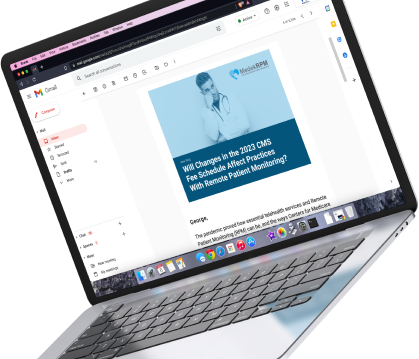
For obstetricians, blood pressure monitoring is the most effective way to prevent maternal mortality and morbidity. This is because the onset of hypertension during pregnancy is responsible for 7.8% of all pregnancy-related deaths, according to HHS (Health and Human Services).
Additionally, there are other cardiovascular issues where a hypertensive disorder during pregnancy would be a symptom of a more serious issue. Using remote patient monitoring (RPM) for hypertension in pregnant women, will gain greater usage as many women continue to work and be active throughout their pregnancy, even if there are medical concerns.
Most women have their blood pressure taken during prenatal visits. But even if they have a dozen visits during the last 8 months of pregnancy, and many women will have fewer visits, having daily readings of the last six months provides far more information to make proper diagnoses, and gain correct treatment.
Pregnancy experts say all pregnant women should have their blood pressure checked during and after pregnancy for up to 6 weeks. One group had 6 years of experience with thousands of women, and saw issues for many women after they left the hospital. Elevated blood pressure can indication of a dangerous condition, preeclampsia.
After giving birth, typically women do not see their doctor until a follow-up appointment 6 weeks later. Many women will skip this appointment, due to the challenge of having a newborn at home. However, a new mother who has normal blood pressure while in the hospital can quickly become hypertensive in the days following childbirth.
For prenatal care, remote monitoring can solve other issues besides hypertension. Remote tools can extend the ability of OB/GYNs with limited schedules. Remote tools can benefit women living in rural areas, where a trip to a physician takes considerable time and expense.
There is a racial element as well. A recent study published in JAMA showed that African-American women are at a higher risk of persistent hypertension after childbirth. The reason for this increase could be hereditary. There is also an economic factor and lack of services in certain African-American communities.
The JAMA article identifies that RMP for high blood pressure as one of the most effective ways to identify and treat postpartum hypertension. While other studies and articles focus on pre-birth monitoring, this JAMA article showed the importance of post-birth monitoring.
It is believed that there are long term benefits for women who participate in RPM during pregnancy. This may be their first encounter with the healthcare system. Good habits, greater engagement and better awareness that came with RMP may continue throughout their lives. People who use telehealth services are more likely to keep using them because they are effective and save money.
Society and the healthcare industry can also benefit in the long term from RPM during pregnancy. In the US, there is nearly a $3B dollar cost associated with preeclampsia. Additionally, preterm birth costs are $13B. Both of these can be radically reduced through RPM for pregnancy.
The cost of hospital readmission for postpartum hypertension is $500M. Remote monitoring after childbirth is a low-cost alternative. Comparing these two options shows a clear benefit. This does not include the societal costs of maternal death and morbidity, which are greatly reduced by RPM.
But there are other additional financial implications. Compare the cost of RPM to nearly $3B dollars in cost associated with preeclampsia, or the $13B+ for preterm birth (a result of 15% of preeclamptic pregnancies). These costs don’t take into account the massive downstream societal costs of maternal death and morbidity.
Insurance companies can help to make a societal shift. Several years ago, Medicare made RPM reimbursement unbundled and easier to utilize. With lessons learned during the pandemic, Medicare now fully supports the use of digital tools in providing care for its patient population.
But Medicaid is lagging behind. There has been slower adoption of RMP reimbursements with Medicaid. This directly affects unserved, economically challenged, and rural patients. It is these women who can most benefit from RMP during their pregnancies.
If people used RMP for pregnancy, we could quickly reduce the mortality number of pregnant women and newborns. RMP can empower patients and providers with more data, and save society huge sums of healthcare dollars. Greater adoption of RMP is needed.
If you have ever considered beginning a Remote Patient Monitoring service for your medical practice, consider starting as a prenatal program. Talk to the people at Medek RPM, one of the fastest growing RPM companies in the US. Start a conversation with Medek Representative today.





